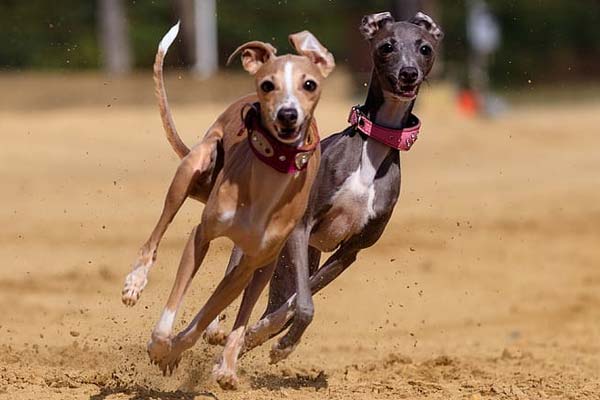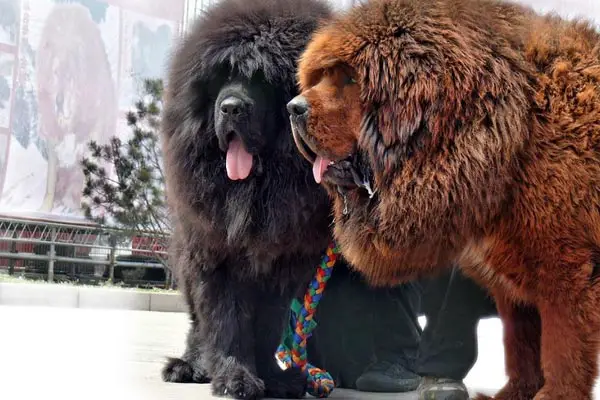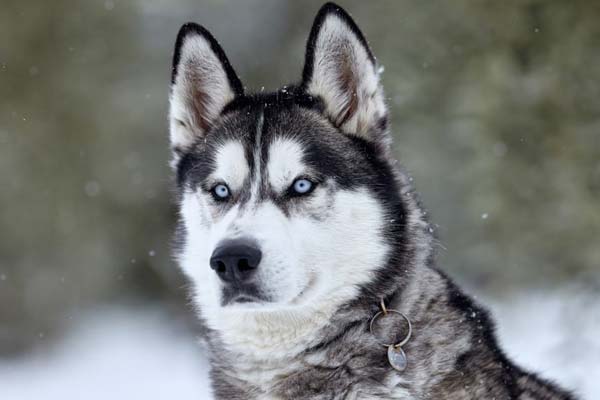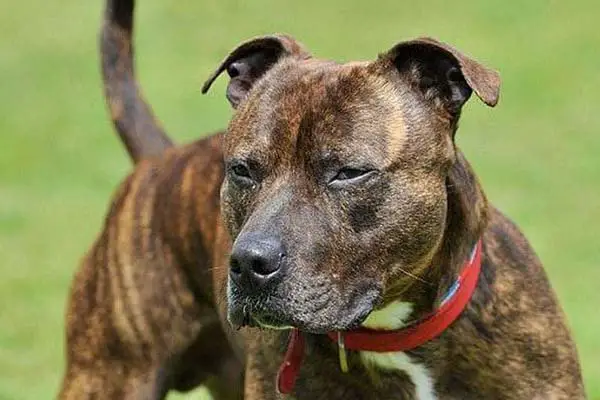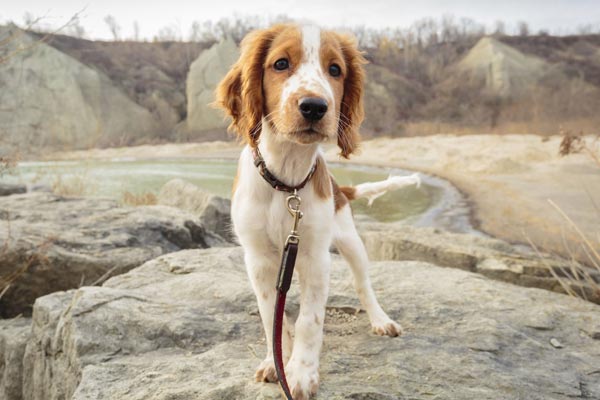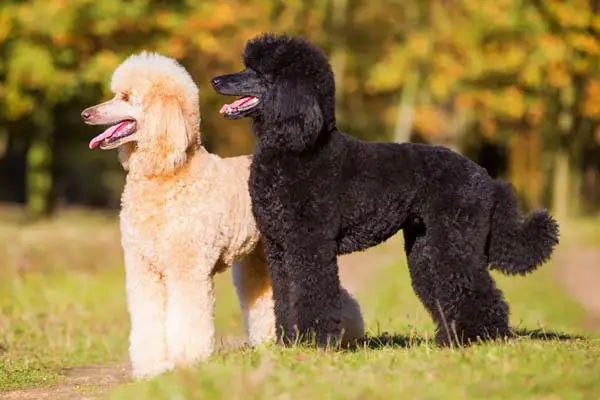Best Dog Breed for Hot and Cold Weather: Top Picks for Year-Round Comfort
Finding the right dog breed to thrive in extreme weather conditions is crucial for pet owners living in harsh climates.
Whether hot or cold, dogs need to be comfortable and safe in their environment to live a healthy and happy life; choosing the right breed for your climate can make all the difference in ensuring your furry friend is well cared for.
In the case of hot weather, some breeds are more adept at coping with the heat than others. Dogs with short, sleek coats like Vizslas and Dalmatians are great options for hot climates.
These breeds have coats that keep them cool in hot temperatures, allowing them to stay active and comfortable even on the hottest days.
On the other hand, dogs with long coats, like Huskies and Malamutes, are better suited for cold weather conditions. Their thick coats provide insulation, keeping them warm in freezing temperatures.
It’s really important to look up and pick a breed that’s perfect for the kind of weather you have. By finding the right dog breed for your environment, you can ensure your furry friend is healthy and happy year-round.
Best Dog Breeds for Hot Weather
Dogs that are well-suited for hot climates tend to have specific physical characteristics. They typically have short coats, long snouts, and light-colored fur that reflects the sun’s rays.
Additionally, they have a high tolerance for heat and can cool off quickly by panting. Here are some of the top dog breeds for hot weather:
Greyhound
Greyhounds are athletic dogs with light coats that keep them comfy in hot weather. They’re fast and fantastic buddies for folks who love being active.
Vizsla
Vizslas have a short, smooth coat that suits them well-suited for hot temperatures. They are affectionate dogs that love to play and exercise with their owners.
Whippet
Whippets are a graceful breed that has a short-haired, gray coat. They are independent dogs that enjoy running and playing in the sun.
Dalmatian
Dalmatians have a unique coat that consists of white fur with black spots. They are an active breed that can handle hot temperatures and are often used as firefighting dogs.
Chihuahua
Chihuahuas are a small breed with short coats and are well-suited for hot weather. They are playful and affectionate dogs that make great companions for apartment dwellers.
Ibizan Hound
Ibizan Hounds have a short, smooth coat that helps them stay cool in hot weather. They’re a lively breed that enjoys running around and having fun.
Yorkshire Terrier
Yorkshire Terriers have a long, silky coat, but their small size suits them well-suited for hot weather. They are affectionate dogs that make great companions for apartment dwellers.
Akita
Akitas have a thick, water-resistant double coat that helps them stay cool in hot weather. They are an independent breed that makes an excellent watchdog.
These are just a few of the many dog breeds that are well-suited for hot weather. When choosing a dog, it’s essential to consider their temperament, energy level, and grooming needs, as well as your own lifestyle and living situation.
Best Dog Breeds for Cold Weather
Dogs are known for their adaptability to different environments and weather conditions. However, some breeds are better suited for cold weather than others.
Dogs well-suited for cold weather have specific physical characteristics that help them cope with low temperatures. These include:
- Thick coat: Dogs with thick coats can better insulate themselves against the cold. They can also regulate their body temperature more effectively.
- Large size: Larger dogs have more body mass, which helps them retain heat.
- High energy levels: Dogs with high energy levels can better keep themselves warm by staying active.
Top Dog Breeds for Cold Weather
The following breeds are some of the best dog breeds for cold weather:
Alaskan Malamute
This dog breed has a thick, double-layer coat that keeps them cozy in the cold. They’re also full of energy and have a can-do attitude, which makes them fantastic sled dogs.
Siberian Husky
This well-known sled dog, the Siberian Husky, comes with a cozy coat that keeps them toasty in chilly weather. They’re also super active and have a cheerful, outgoing personality.
Bernese Mountain Dog
This type of dog has a fluffy, long coat that’s great for keeping warm in the cold. They’re super flexible and can do well in all kinds of places.
Newfoundland
This breed has a thick, water-resistant double coat that provides excellent insulation against the cold. They are also brilliant and make fantastic working dogs.
Saint Bernard
This dog breed features a thick, plush coat that protects against cold temperatures. They’re also brilliant and serve as exceptional rescue dogs.
These breeds are well-suited for cold weather due to their thick coats, insulation, and high energy levels. They can also adjust quickly and do well in different environments.
Things to Keep in Mind When Picking a Dog Breed for Your Weather Conditions
When choosing a dog breed, it is crucial to consider the climate you live in. Extreme weather conditions can affect your pup’s health and well-being, so picking a breed that can thrive in your environment is crucial. Here are some factors to consider when choosing a dog breed for your climate:
Size of Living Space
The space you have at home is essential when picking a dog breed. If you live in a small apartment, consider getting a smaller breed that doesn’t need much space to run. But if you have a big backyard, maybe go for a giant breed with more room to play.
Exercise Requirements
Different dog breeds need different amounts of exercise. If you live somewhere hot, think about getting a breed that doesn’t need much training since too much activity in the heat can be bad for your dog. But if you live in a cold place, consider a breed that needs more exercise to stay active and healthy.
Temperament
When choosing a dog breed, it’s essential to consider its temperament. Some breeds are more laid-back and relaxed, while others are more energetic and active. If you live in a hot climate, you may want to consider a more laid-back breed that doesn’t require much activity.
But if you live in a cold place, consider getting a more lively and active breed.
Grooming Needs
Different dog breeds have different grooming needs. If you live in a hot climate, you may want to consider a breed with a short coat that doesn’t require a lot of grooming. On the other hand, if you live in a cold place, think about getting a breed with a longer coat to help them stay warm.
Breed Intelligence
Breed intelligence is another crucial factor to consider when choosing a dog breed. Some breeds are more intelligent and easier to train than others. If you live in a hot climate, you may want to consider a breed that is easier to train and doesn’t require a lot of mental stimulation.
On the other hand, if you live in a cold place, think about getting a more intelligent breed that can handle more challenging tasks.
Coat
The type of coat a breed has can also affect how well they handle extreme weather conditions. Breeds with thick coats do better in cold weather, while breeds with short coats do better in hot weather. If you live in a hot climate, you may want to consider a breed with a short coat that can help them stay calm. On the other hand, if you live in a cold place, think about getting a breed with a thick coat to help them stay warm.
Guard Dog
If you are looking for a guard dog, choosing a breed that is wary of strangers and has a protective nature is crucial. Some breeds are naturally more protective than others, so it’s essential to research and choose a breed that fits your needs.
When choosing a dog breed for extreme weather, it’s essential to consider the size of living space, exercise requirements, temperament, grooming needs, breed intelligence, coat, and guard dog capabilities.
Considering these factors, you can choose a breed that will thrive in your climate and be a happy, healthy companion for years.
Tips for Caring for Your Dog in Extreme Weather
To help your furry buddy stay comfy and safe in extreme weather, there are a few things you can do to make their life better. Here are some tips to help you keep your dog healthy and happy in hot and cold weather:
Hot Weather
Giving your dog shade and water is important when it’s hot outside. Dogs control their body heat by panting and sweating from their paw pads, so they need to cool down fast if they get too hot.
Here are some tips to help your dog stay cool:
- Provide access to fresh water at all times.
- Use a water-resistant sunscreen on dogs with thin fur or light skin
- Avoid hot pavement, which can burn your dog’s paw pads.
- Use a cooling mat or vest to help your dog cool off.
- Adjust your exercise routine to avoid the hottest parts of the day.
Cold Weather
In cold weather, your dog may need extra protection to stay warm. Here are some tips to help keep your dog warm and comfortable:
- Put dog boots on their paws to protect them from ice and snow.
- Consider a dog coat to keep them warm in extreme cold.
- Adjust your exercise routine to avoid the coldest parts of the day.
- Keep your dog’s coat healthy and well-groomed for better insulation.
- Give your dog a cozy, dry spot to sleep.
General Tips
Here are some additional tips to help you care for your dog in extreme weather:
- Watch for signs of heatstroke or hypothermia, such as excessive panting or shivering.
- Train your dog to be comfortable in different weather conditions.
- Provide mental stimulation to keep your dog from getting bored or anxious.
- Use obedience training to help your dog stay safe in other weather conditions.
- Consider a watchdog or GPS tracker to keep your dog from wandering off.
Following these suggestions can help your dog stay happy and healthy in any weather. Always put your dog’s health first, and visit the vet if you see any signs of sickness or discomfort.
Conclusion
Choosing the right dog breed for your climate is crucial for your pet’s health and well-being. The search results show that some breeds are better adapted to hot weather, while others thrive in colder temperatures. It is essential to consider your local climate and lifestyle before deciding on a dog breed.
Researching and consulting with professionals can help you make an informed decision. Veterinarians, breeders, and experienced dog owners can provide valuable insights into different breeds’ temperaments and requirements. It is also essential to consider factors such as exercise needs, grooming requirements, and potential health issues.
Some well-suited breeds for hot weather include the Chihuahua, Weimaraner, and Greyhound. These breeds have adapted to warm climates and have short coats, efficient metabolism, and long legs that help them regulate their body temperature.
For colder climates, breeds such as the Siberian Husky, Alaskan Malamute, and Saint Bernard are well-suited. These breeds have thick fur coats, high energy levels, and endurance, allowing them to thrive in sub-zero temperatures.
Choosing the right dog breed for your weather is vital for your pet’s well-being and joy. Researching and talking to experts can help you make an intelligent choice that’s good for you and your fluffy friend.
